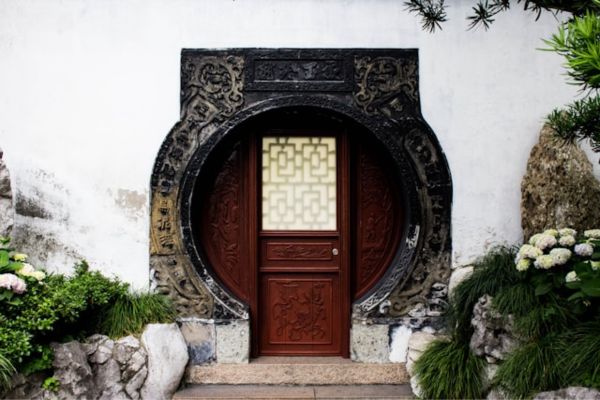
How does a Chinese court set a Case Number(案号) for each case?
I. Basic Format of Case Number
The general format of the case number in Chinese courts is as follows: (year of case acceptance) + court code + case type code + serial number. Take “(2017) Jing 04 Min Zhong No. 367 ((2017)京04民终367号)” as an example:
“(2017)” is the year of case acceptance
“Jing 04”(京04) is the court code, referring to Beijing Fourth Intermediate People's Court
“Min Zhong”(民终) is the case type code, referring to the civil case of second instance
“No. 367”(367号) is the serial number
Therefore, “(2017) Jing 04 Min Zhong No. 367”((2017)京04民终367号) refers to the 367th civil case of second instance accepted by Beijing Fourth Intermediate People's Court in 2017.
Next, we will walk you through the compilation of the court code and the case type code respectively.
II. Compilation Rules for Court Codes
Before 2016, there was no uniform court code rule in China, and a court generally chose one or two Chinese characters from the full name of the court as the court code in the case number. This practice not only made the court code chaotic and difficult for identification, but also produced many duplicate codes. For example, the Beijing High People's Court(北京市高级人民法院) is a provincial high court, and the Gaomi Primary People’s Court of Shandong Province(山东省高密市人民法院) is a county-level grass-root court, but codes of both courts are “Gao 高(literally means “high” in English)”. Seeing the word “Gao”(高) in the case number, people cannot determine which court the case comes from, or are even more likely to think that the case comes from the Supreme People's Court (SPC), since in Chinese pinyin, the SPC pronounces “Zui Gao Ren Min Fa Yuan”(最高人民法院), which also includes the word “Gao”(高).
Since 2016, China has begun to implement uniform court code compilation rules. Through this set of rules, each court has a unique code, from which we can be directly informed of the court's location, hierarchy, category, and other information. The basic framework of this set of rules is:
The abbreviation of the province where the court is located (1 Chinese character) + administrative division code/special code (2 or 4 Arabic numerals).
Each provincial administrative region in China has a fixed abbreviation of one Chinese character (for example, Beijing(北京) is abbreviated as “Jing”(京) and Guangdong is abbreviated as “Yue”(粤)). The code of all high courts is the abbreviation of the Chinese character of the province in which they are located (but the abbreviation for courts in Inner Mongolia (内蒙古, in Chinese pinyin, Neimenggu) is “Nei” (内)instead of “Meng”(蒙). There are 6-digit codes for courts in all administrative divisions above the county level in China. Among them, the 1st and 2nd digits refer to the province, the 3rd and 4th digits refer to the city, while the 5th and 6th digits refer to the district/county. The code for the intermediate court needs to be affixed with the 3rd and 4th digits after the provincial abbreviation, while the code for the grass-roots court needs to be affixed with the 3rd to 6th digits. The code of the Supreme People's Court is “Zui Gao Fa”(最高法). The following Table intuitively illustrates the compilation of court codes at all levels:

The code of the special court should also begin with the abbreviated Chinese character of the province where it is located, and the subsequent Arabic numerals are generally used to indicate the category of the court. Similarly, we use a Table for illustration:

The SPC has published the code list of all courts in Mainland China on its official website and updated it several times (for more details, see http://www.court.gov.cn/fabu-xiangqing-14970.html). The last update was on 29 June 2016.
III. Compilation Rules for Case Type Codes
Case type codes, like court codes, did not have uniform rules until 2016. Since then, the rules have been revised several times. According to the existing rules, all cases of Chinese courts are divided into 11 categories, such as criminal cases, civil cases, and administrative cases. Each category of cases can be further subdivided into several subcategories. Each sub-category has a case type code, which is composed entirely of Chinese characters. Take civil cases (Category 3) as an example:

From the above Table, we can see that some of the case type codes are compiled according to the stage in which the case is, and some are compiled according to the way the case is initiated or the content of the case. Multiple sub-categories may share one case type code.
Most commercial cases do not have separate case type codes, but use civil case type codes. However, for the first instance commercial cases accepted by the International Commercial Court of the SPC, the special code “Shang Chu”(商初) is used. For example: “(2019) Zui Gao Fa Shang Chu No. 1”((2019)最高法商初1号) refers to the 1st first-instance commercial case accepted by the International Commercial Court of the SPC in 2019.
There is no separate case type code for intellectual property cases. However, in cases of invention patents and technical secrets with stronger technical attribute docketed after 1 January 2019, it is necessary to add a word “Zhi” (知)(the first character of “intellectual property”(知识产权) in Chinese) before the case type code. For example: “(2019) Zui Gao Fa Zhi Min Zhong No. 2”((2019)最高法知民终2号) refers to the 2nd second-instance civil case with stronger technical attribute accepted by the SPC in 2019.
Like the court code, the case type code table can be accessed on the official website of the SPC (for more details, see http://www.court.gov.cn/zixun-xiangqing-14970.html). It was last updated on 15 July 2016.
IV. Quiz
As an ancient Chinese saying goes: Practice what you’ve learned. According to the introduction above, you may try to interpret the information in the following case number and send it to zhangchenyang@yuanhepartners.com. If all your interpretation is correct, you may be rewarded by a special gift:
(2017) Jing 0105 Min Chu No. 35580 ((2017)京0105民初35580号)
(2017) Jing 04 Min Chu No. 42 ((2017)京04民初42号)
(2018) Yue 73 Min Zhong No. 723 ((2018)粤73民终723号)
(2018) Hu Min Zai No. 5 ((2018)沪民再5号)
(2019) Zui Gao Fa Zhi Min Zhong No. 66 ((2019)最高法知民终66号)
If you would like to discuss with us about the post, or share your views and suggestions, please contact Mr. Chenyang Zhang (zhangchenyang@yuanhepartners.com).
Contributors: Chenyang Zhang 张辰扬








